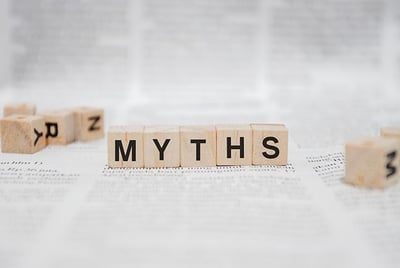Page 12 111 - 120 of 143
Due Diligence And Qualified Opportunity Fund Managers

This is the first of five blogs detailing the importance of researching Quality Opportunity Fund managers, when targeting Qualified Opportunity Zones for investment. A great deal has been written about the Qualified Opportunity Zone (QOZ) program, since it was introduced as part of the Tax Cuts and Jobs Act in 2017. The program has mostly been lauded for its community improvement potential (channeling resources toward disadvantaged, lower-income areas) and investor benefits (capital gains tax deferrals).
New Federal Guidelines Give Opportunity Zones More Time

Due to the COVID-19 pandemic, the government has given investors and developers an extension for deploying capital and starting projects in Opportunity Zones (OZ). Before the deadline extension, investors were required to deploy 90 percent of their capital into OZ projects. To ensure these deployments were met, the government checked where OZ-related funds were going twice each year. With recent modifications to the rules by the Treasury Department and Internal Revenue Service, the new extension allows investors to hold onto those funds until June 30, 2021.
How Do Opportunity Zones Help Communities?

The Opportunity Zone (OZ) program was created to help economically disadvantaged communities by providing tax incentives for private investments in those areas. These low-income communities have struggled while much of the rest of the country has grown. According to the Economic Innovation Group’s research, there are approximately 50 million Americans that live in communities that are struggling to attract investments and sustain economic opportunity for their residents. The country’s distressed zip codes contained 1.4 million fewer jobs in 2016 than they did in 2007. Through private investment, the hope is that jobs, new businesses, improved housing options, and general revitalization of these distressed communities will occur. As an incentive to get businesses involved in OZs, the federal government provides capital gains tax deferrals for any entities investing in OZs and no capital gains tax for gains earned from the OZ investment.
Common Misconceptions About Qualified Opportunity Zones (QOZs)

There are a number of common misconceptions about the Qualified Opportunity Zone (QOZ) Program. To help clarify speculation and misunderstandings, we’ve put together five of the most common misconceptions.
Some Opportunity Zone Funds Get Extra 24 Months to Deploy Their Funds

Eligible qualified opportunity funds (QOFs) got a boost from the federal government with a 24-month extension for deploying working capital. This is on top of the 31-month working capital safe harbor (WCSH) that is included in the program regulations. To better understand how and where the 24-month extension applies, let’s first go over the 31-month WCSH.
Are Qualified Opportunity Zones Right for Me?

Qualified Opportunity Zones (QOZs) are not right for everyone. Despite the numerous potential benefits, like any investment, there is no perfect solution. Before investing in QOZs, you should consider the following elements and decide if QOZs are right for you.
Qualified Opportunity Zone Trends

Now that Qualified Opportunity Zone (QOZ) regulations are getting finalized, investments are beginning to pick up steam, and QOZ funds are generally mirroring non-QOZ real estate development funds. A report from Novogradec shows, as of the beginning of January, that QOZ funds have raised more than $6.7 billion, which is a 50% increase from just a month ago.
New Bills Seek To Amend Opportunity Zone Census Tracts

The Qualified Opportunity Zone (QOZ) program has attracted a lot of congressional attention in recent months, including several legislative proposals. How should current or potential future investors in QOZs view these proposals? In this article, we will discuss some of the recent developments and the possible ramifications.
The Hidden Risks Of Opportunity Zones

Qualified Opportunity Zone (QOZ) investments are among the highest risk opportunities available for real estate investment. It is essentially ground-up development in unproven locations. There are a few apparent major risks, such as development completion and lack of liquidity, but investors should also consider the more hidden risks that these opportunities may contain before making their investments.
Disadvantages Of Qualified Opportunity Zones

On realized1031.com, we’ve discussed the benefits of the QOZ program extensively. Some of the primary highlights are: Deferral and reduction of original gain. Dismissal of gain in the fund if held for 10 or more years. Opportunity to grow tax-optimized wealth. Fund managers like to flaunt these benefits. But listening to only the benefits of an investment opportunity doesn’t tell the full story. In this article, we’re going to cover three areas that present real risks to QOZ investors.
Page 12 111 - 120 of 143


